Introduction: 8 Vital Health Metrics Your Fitness Tracker In the world of fitness trackers and smartwatches, data is king. These nifty devices provide us with a wealth of health information, from the number of steps we’ve taken to the quality of our sleep. However, not all metrics are created equal, and sifting through the data
Introduction: 8 Vital Health Metrics Your Fitness Tracker
In the world of fitness trackers and smartwatches, data is king. These nifty devices provide us with a wealth of health information, from the number of steps we’ve taken to the quality of our sleep. However, not all metrics are created equal, and sifting through the data overload can be overwhelming. To help you make the most of your fitness tracker, we’ve identified the top 8 health data points you should be paying attention to. These metrics can provide valuable insights into your well-being and help you achieve your fitness goals more effectively.
1. Heart Rate: Your Cardio Compass
Your heart rate (HR) is a fundamental health metric, and your fitness tracker’s ability to monitor it is invaluable. Here’s a deeper dive into why it matters:
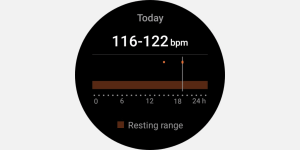
Image by https://www.makeuseof.com/
- Resting Heart Rate (RHR): Your RHR, typically between 60–100 beats per minute (BPM) for adults, reflects your heart’s baseline activity when you’re at rest. A lower RHR generally indicates better cardiovascular fitness.
- During Exercise: Monitoring your heart rate during workouts is like having a personal fitness coach. It guides you on when to push harder or take it easy. For example, you might target a higher BPM during a high-intensity interval training (HIIT) session and a lower BPM during a leisurely walk.
- Alerts: Many fitness tracker provide heart rate alerts, notifying you if your heart rate goes beyond a healthy threshold. This feature can help you avoid overexertion and potential heart-related issues.
2. Sleep Quality: The Gateway to Vitality
Quality sleep is essential for overall well-being, and modern fitness trackers offer advanced sleep monitoring capabilities:
- Beyond Hours: While knowing how many hours you’ve slept is useful, tracking sleep stages such as REM (rapid eye movement) sleep and deep sleep provides deeper insights. REM sleep, in particular, is associated with memory consolidation and emotional regulation.
- Patterns and Trends: Over time, your tracker can detect patterns in your sleep quality, helping you identify factors that impact your rest. It can flag issues like frequent awakenings or snoring, which may require attention.
3. Body Composition: Beyond Weight
Understanding your body composition is crucial for a holistic view of your fitness progress:
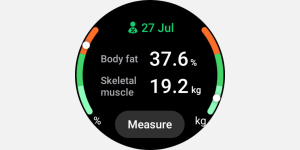
Image by https://www.makeuseof.com/
- Fat vs. Muscle: Weight alone doesn’t tell the full story. Knowing your body fat percentage versus lean muscle mass ratio provides a clearer picture of your health.
- Bio-Impedance Technology: Devices like the Samsung Galaxy Watch 4 use bio-impedance technology to measure body composition. By sending a mild electrical current through your body and measuring resistance, they estimate fat and muscle percentages.
- Health Implications: Maintaining a healthy balance is essential. Too much body fat can increase the risk of heart disease and diabetes, while too little can indicate inadequate protein intake, hindering post-exercise recovery.
4. Active Minutes: Stay Moving
In our sedentary world, tracking active minutes helps combat the risks of prolonged sitting:
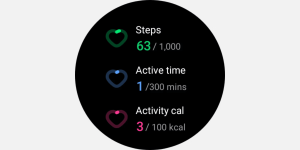
Image by https://www.makeuseof.com/
- Moderate vs. Vigorous Activity: Your tracker categorizes activities as moderate or vigorous. Understanding these levels helps you gauge your physical exertion throughout the day.
- CDC Recommendations: The Centers for Disease Control and Prevention (CDC) advise 150 minutes of moderate-intensity activity for adults each week. Tracking active minutes ensures you meet these guidelines, promoting overall health.
5. Menstrual Health: A Woman’s Well-being
For women, menstrual health tracking provides valuable insights into reproductive and overall health:
- Reproductive Health: Tracking menstrual cycles helps manage reproductive health. It can detect irregularities or disruptions that may be related to stress or underlying conditions.
- Symptom Management: Some trackers allow you to log symptoms, aiding in symptom management. This feature is particularly beneficial for understanding how your menstrual cycle affects your well-being.
6. Cadence: Stride Towards Efficiency
Cadence, especially for runners, is about more than just step count:
Image by https://www.makeuseof.com/
- Efficiency: Cadence measures the number of steps taken per minute while running. A higher cadence typically means shorter strides and less energy expenditure, making your runs more efficient.
- Joint Health: Increasing cadence can reduce impacts on lower body joints, contributing to better long-term joint health.
7. VO2 Max: The Endurance Indicator
VO2 max is a powerful metric for assessing your cardiovascular fitness:
- Aerobic Capacity: VO2 max represents your body’s ability to consume oxygen during exercise. A higher VO2 max suggests better endurance and aerobic capacity.
- Fitness Assessment: Select fitness trackers like the Apple Watch Series 7 or Garmin Fenix 5 offer VO2 max tracking. It’s a valuable tool for fine-tuning your fitness goals and monitoring progress.
8. Calories Burned: The Energy Equation
Understanding calories burned is pivotal for maintaining a healthy weight:
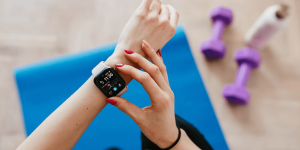
Image by https://www.makeuseof.com/
- Calorie Burn Estimates: Fitness trackers provide estimates of calories burned based on your activity levels. This data empowers you to make informed decisions regarding your diet and exercise habits.
- Basal Metabolic Rate (BMR): Calculating your BMR provides a baseline for calorie burn estimates. It accounts for the calories your body needs at rest, aiding in personalized dietary choices.
| Metric | Importance | How It Helps |
|---|---|---|
| 1. Heart Rate | Vital | Guides exercise intensity and detects anomalies. |
| 2. Sleep Quality | Essential | Enhances sleep patterns and overall well-being. |
| 3. Body Composition | Holistic Fitness Indicator | Balances fat vs. muscle for heart health and recovery. |
| 4. Active Minutes | Combat Sedentary Lifestyle | Ensures daily physical activity for overall health. |
| 5. Menstrual Health | Women’s Well-being | Manages reproductive health and tracks symptoms. |
| 6. Cadence | Running Efficiency | Improves running technique and joint health. |
| 7. VO2 Max | Cardiovascular Fitness | Measures aerobic capacity and endurance. |
| 8. Calories Burned | Weight Management | Informs dietary choices and exercise planning. |
These metrics collectively provide a comprehensive view of your health and fitness, allowing you to make informed decisions and work towards a healthier lifestyle.
Conclusion:
In a world brimming with fitness data, it’s crucial to focus on the metrics that matter most to your well-being. By keeping a close eye on your heart rate, sleep quality, body composition, active minutes, menstrual health (for women), cadence, VO2 max, and calories burned, you’ll gain valuable insights into your health and fitness journey. These metrics serve as guideposts on your path to improved well-being and a healthier, happier life. So, make the most of your fitness tracker by harnessing the power of these essential health data points.

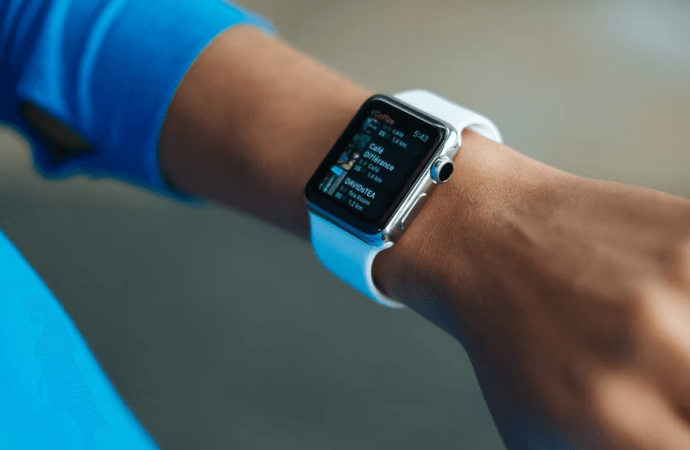















Leave a Comment
Your email address will not be published. Required fields are marked with *